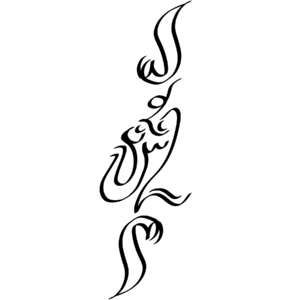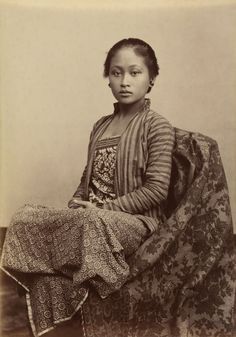Uelamanpu'ue Clan: Difference between revisions
Takatta Loa (talk | contribs) mNo edit summary Tag: 2017 source edit |
Takatta Loa (talk | contribs) mNo edit summary Tag: 2017 source edit |
||
| (One intermediate revision by the same user not shown) | |||
| Line 2: | Line 2: | ||
[[File:Uelamanpu'ue.png|thumb|Banner of the clan]] | [[File:Uelamanpu'ue.png|thumb|Banner of the clan]] | ||
There are no members of the clan remaining in [[Takatta Loa]], all of them having fled to [[Sudmoll]], [[Sarolasta]] and [[Daxia|Daxian]] [[Stenza]] during the years immediately following the | |||
'''The Uelamanpu'ue Clan''' is a clan of minor Loa nobility that used to rule along the Satana Coast in an area of traditional Loa settlement. From the years 1790-1875, the Uelamanpu'ue ruled as vassal kings to the Loa Empire. When the [[Takatta Loa Civil War]] broke out, the clan experienced significant uprisings and revolts by their population, resulting in large scale migration outside of Takatta Loa. Since then, the clan has managed to establish significant connections among the [[Loa Diaspora]] and among diaspora centered businesses, specializing in exportation of Loa products to various communities overseas. The clan also manages to maintain traditional Loa religious beliefs, rejecting the current influence of Natano in favour of their clan spirit, which has caused significant contentions between the clan and the Loa government. | |||
There are no members of the clan remaining in [[Takatta Loa]], all of them having fled to [[Sudmoll]], [[Sarolasta]] and [[Daxia|Daxian]] [[Stenza]] during the years immediately following the Takatta Loa Civil War in 1875. There are approximately 6,983 members of the clan, of which 2,146 live in Sudmoll, 2,941 live in Stenza along with 5,273 retainers and 1,896 live in Sarolasta. | |||
==History== | ==History== | ||
In the year 1787, the Empress Pueakaoiso'o of the Loa Empire suffered from a bout of gout that resulted in severe incapacitation. A doctor name Uelaman from the mainland managed to treat it in less than a year, and so out of gratitude the Empress made him the Katu of the Satana Coast, which had been held by the Imperial family directly for generations. He initially relied on assigned ministers as he was a commoner with no ruling experience, but after his death in 1812 his daughter inherited. Uesakanasii was educated in the Imperial Court and was a notable intellect. She laid much of the foundation for the success of the clan. | |||
===Uesakanasii=== | |||
Katu Uesakanasii established a port in the city of Kanopaiaio, and established a free shipping company, predominantly trading minor unregulated goods with Occidental nations. Further, she established three sugar processing facilities and the Uelamanpu'ue Sugar Company, which was a transport and shipping company that specialized in transporting inland sugar to the coasts for shipping to Kiravia. The Company owned no actual boats however, instead booking a large space or a whole boat either from the [[Imperial Merchant Navy]], or from private companies associated with Kiravia and then charging customers and suppliers a shipping fee. This resulted in significant wealth for the region and for the clan as Uesakanasii reinvested much of the profits into regional infrastructure and enrichment. | |||
===Exile=== | ===Exile=== | ||
[[File:Uesumano.jpg|thumb|Lady Uesumano, First Katu of the Uelamanpu'ue in exile]] | [[File:Uesumano.jpg|thumb|Lady Uesumano, First Katu of the Uelamanpu'ue in exile]] | ||
The Uelamanpu'ue left the | The Uelamanpu'ue left the Satana Coast entirely, eventually coming to stay in Usomo. From there, they tapped into the trade networks that the dynasty had established, seeking refuge in Sarolasta. However, the Katu had also heard from the [[Burgundie|Burgoignesc]] merchants on the island that there was a rush to Sudmoll given the collapsing Alshari colonies. As such, the two remaining triplets, Uesumano and Laitopoa traveled to Burgundie and Sudmoll, and Kiravia and Sarolasta respectively. They had both found the two colonies to be quite agreeable, and seeking to establish new Occidental ties as well as maintaining existing Kiravian and Cronan ties, decided to split the clan into the Topoa and Sumano branches, in Sarolasta and Sudmoll respectively. In addition, Uesumano's second eldest son was sent to Daxia to petition the Daxian state for the construction of a small cotton plantation in what is now modern day Stenza to be staffed entirely by Huelaban retainers and the Uelamanpu'ue lesser nobles. This was approved, and thus the clan was extended to Stenza. Approximately 900 members, including Uesumano, settled in Sudmoll, 1,500 in Stenza along with 3,000 retainers and 800 in Sarolasta. | ||
==Structure== | ==Structure== | ||
Latest revision as of 23:03, 20 September 2023
This article is a work-in-progress because it is incomplete and pending further input from an author. Note: The contents of this article are not considered canonical and may be inaccurate. Please comment on this article's talk page to share your input, comments and questions. |

The Uelamanpu'ue Clan is a clan of minor Loa nobility that used to rule along the Satana Coast in an area of traditional Loa settlement. From the years 1790-1875, the Uelamanpu'ue ruled as vassal kings to the Loa Empire. When the Takatta Loa Civil War broke out, the clan experienced significant uprisings and revolts by their population, resulting in large scale migration outside of Takatta Loa. Since then, the clan has managed to establish significant connections among the Loa Diaspora and among diaspora centered businesses, specializing in exportation of Loa products to various communities overseas. The clan also manages to maintain traditional Loa religious beliefs, rejecting the current influence of Natano in favour of their clan spirit, which has caused significant contentions between the clan and the Loa government.
There are no members of the clan remaining in Takatta Loa, all of them having fled to Sudmoll, Sarolasta and Daxian Stenza during the years immediately following the Takatta Loa Civil War in 1875. There are approximately 6,983 members of the clan, of which 2,146 live in Sudmoll, 2,941 live in Stenza along with 5,273 retainers and 1,896 live in Sarolasta.
History
In the year 1787, the Empress Pueakaoiso'o of the Loa Empire suffered from a bout of gout that resulted in severe incapacitation. A doctor name Uelaman from the mainland managed to treat it in less than a year, and so out of gratitude the Empress made him the Katu of the Satana Coast, which had been held by the Imperial family directly for generations. He initially relied on assigned ministers as he was a commoner with no ruling experience, but after his death in 1812 his daughter inherited. Uesakanasii was educated in the Imperial Court and was a notable intellect. She laid much of the foundation for the success of the clan.
Uesakanasii
Katu Uesakanasii established a port in the city of Kanopaiaio, and established a free shipping company, predominantly trading minor unregulated goods with Occidental nations. Further, she established three sugar processing facilities and the Uelamanpu'ue Sugar Company, which was a transport and shipping company that specialized in transporting inland sugar to the coasts for shipping to Kiravia. The Company owned no actual boats however, instead booking a large space or a whole boat either from the Imperial Merchant Navy, or from private companies associated with Kiravia and then charging customers and suppliers a shipping fee. This resulted in significant wealth for the region and for the clan as Uesakanasii reinvested much of the profits into regional infrastructure and enrichment.
Exile

The Uelamanpu'ue left the Satana Coast entirely, eventually coming to stay in Usomo. From there, they tapped into the trade networks that the dynasty had established, seeking refuge in Sarolasta. However, the Katu had also heard from the Burgoignesc merchants on the island that there was a rush to Sudmoll given the collapsing Alshari colonies. As such, the two remaining triplets, Uesumano and Laitopoa traveled to Burgundie and Sudmoll, and Kiravia and Sarolasta respectively. They had both found the two colonies to be quite agreeable, and seeking to establish new Occidental ties as well as maintaining existing Kiravian and Cronan ties, decided to split the clan into the Topoa and Sumano branches, in Sarolasta and Sudmoll respectively. In addition, Uesumano's second eldest son was sent to Daxia to petition the Daxian state for the construction of a small cotton plantation in what is now modern day Stenza to be staffed entirely by Huelaban retainers and the Uelamanpu'ue lesser nobles. This was approved, and thus the clan was extended to Stenza. Approximately 900 members, including Uesumano, settled in Sudmoll, 1,500 in Stenza along with 3,000 retainers and 800 in Sarolasta.